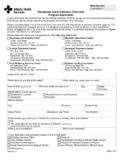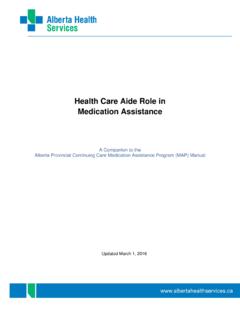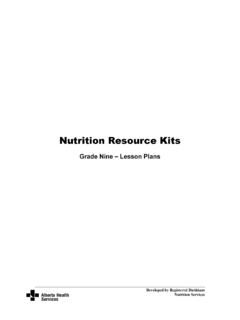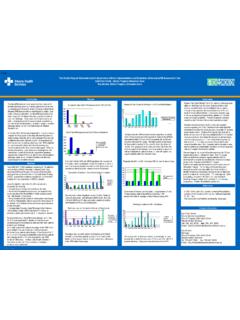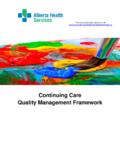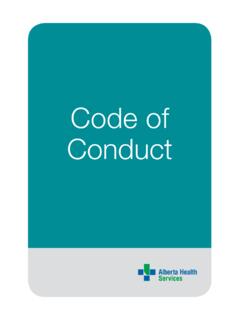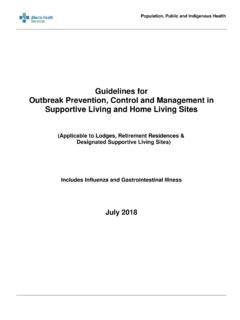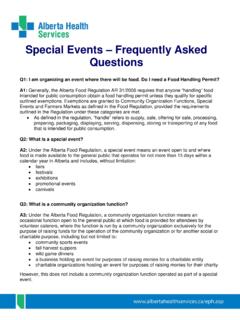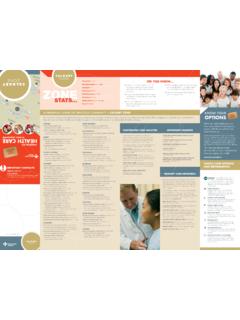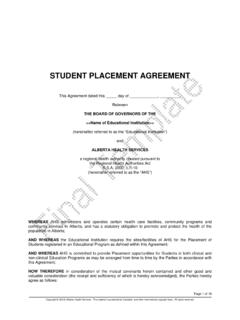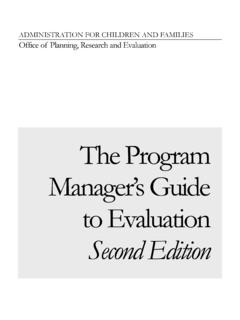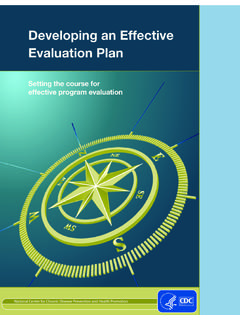Transcription of Evaluation Plan and Evaluation Framework
1 Evaluation plan and Evaluation Framework What is an Evaluation plan ? An Evaluation plan is a written document that describes the overall approach or strategy that will be used to guide the Evaluation . It includes information on: Why the Evaluation is being conducted What will be done Who will do it When will it be done How Evaluation findings will likely be used (McDonald et al., 2001). Developing an Evaluation plan Writing an Evaluation plan is the final step to planning an Evaluation . An Evaluation plan is a written description of the plan for carrying out the Evaluation . The plan should include a concise description of: the program and its goals resources and scope of the Evaluation Evaluation objectives and questions outputs, outcomes and measures data sources and data collection methods ethical considerations data analysis strategy timelines and anticipated reporting dates roles and responsibilities strategy for disseminating results and developing recommendations An overview of some important elements of an Evaluation plan is provided below.
2 Determining program goals and objectives to inform Evaluation objectives An Evaluation plan should identify the objectives of the Evaluation , which are statements on what the Evaluation will achieve. Evaluation objectives are directly linked to the goals of the program being evaluated; therefore, to develop them, the program's goals and objectives need to be understood. 1. Determining Evaluation questions, outcomes and indicators Evaluation questions are linked to Evaluation objectives, specific program outcomes and measures or categories of outcomes and measures. Depending on the type of the program/initiative, Evaluation questions may focus on: Planning and implementation issues ( , how well the program was planned out and how well was that plan put into practice?)
3 Attainment of program objectives ( , how well has the program met its stated objectives?). Impact of the program on participants and/or community ( , what difference has the program made to its intended targets of change or community as a whole?). (KU Work Group for Community Health and Development, 2011). Evaluation questions often address broad issues to be assessed. To operationalize them, the evaluator needs to determine what those questions mean in the context of the program and its Evaluation , and how they will be measured. This can be achieved by identifying key outputs and outcomes that correspond to each questions and developing measures (indicators) for each one. Outputs refer to the size and scope of the services delivered or produced by a program ( Kellogg Foundation, 2004, p.)
4 8); for example, number of workshops and number of participants attending Outcomes refer to the changes in attitudes, behaviors, knowledge, skills, status, or level of functioning expected to result from program activities ( Kellogg Foundation, 2004). Indicators are specific measures indicating the point at which goals and/or objectives have been achieved. Often they are proxies for goals and objectives which cannot be directly measured (Health Communication Unit, 2007, ). As stated by Green and South (2006), Having good, clear objectives in place will make the job of selecting indicators much easier (p. 69). They further suggest that the expected outcomes of a program would need to be identified to guide the selection of the indicators of its success.
5 When developing indicators for an Evaluation , the following expectations should be met: Measures (indicators) are relevant to outputs and outcomes that have been identified Measures (indicators) abide by ethical standards for research and Evaluation ( , Tri- Counsel guidelines). Measures (indicators) must be valid and reliable Both outcomes and indicators should be realistically measurable, and provide useful information (Patton, 1997). 2. Indicators continued: For program outcomes that are difficult to capture, the most relevant and practical indicators should be selected. Quite often, evaluators might have to opt for using indicators that only measure something indirectly. It is important that the evaluator acknowledges the limitations of selected measures when the findings are reported (Green and South, 2006, ).
6 Here are some examples of indicators that can be defined and tracked include measures of program activities and program effects: Examples of measures of program activities: The program's capacity to deliver services The participation rate Levels of client satisfaction The efficiency of resource use The amount of intervention exposure Examples of measures of program effects: Changes in participant behavior Changes in community norms, policies or practices Changes in health status and/or quality of life Changes in settings or environment around the program It is important to note that: Multiple indicators are often needed to track the implementation and effects of a program. A program logic model can serve as a very useful guide for developing multiple indicators for an Evaluation .
7 Information about Evaluation questions, outcomes and indicators is often captured in an Evaluation Framework . ( ). 3. Developing Evaluation methods Evaluation plans should describe how Evaluation data will be gathered. This section of the Evaluation plan may include: A description of any participants Sampling techniques Participant recruitment strategy Consent processes and how ethical concerns such as confidentiality are addressed Data collection methods ( , interviews, focus groups, surveys). Whether collected data will be qualitative, quantitative, or both If data is extracted from an existing database, a description of the original database is to be provided If document reviews are used, an overview of how this is done and the nature of the documents being reviewed A description of any available baseline measures, if applicable Whether a literature review will be carried out, and if so, a description of the focus of the review and search strategy A description of how access to third party data will be negotiated, if the Evaluation will involve a third party; as well as, description of any information sharing agreements, if applicable What are some potential sources of data?
8 Service recipients ( , program participants; community indexes for programs designed to improve community-level variables; artifacts produced by program participants or community members). Service providers ( , program staff and program records). Observers or people who are not part of the program ( , accreditation staff; Evaluation staff; trained observers; people who have contact with the program participant(s) outside of the program and may be able to provide important information on improvements or problems What are some of the methods for gathering Evaluation data? Written surveys Interviews Checklists Tests Summaries of records/documents Focus groups Extractions from administrative datasets (Posavac and Carey, 1997). 4. Posavac and Carey, 1997.)
9 Defining roles and responsibilities and developing an Evaluation timeline An Evaluation plan needs to provide a description of who will do what, when and how? For instance, who will: Communicate the Evaluation plan Carry out literature reviews/collect background information Develop tools, instruments, and consent procedures Collect, enter and analyze data Write-up and disseminate results An Evaluation plan needs to provide information about the timeline of the Evaluation . In setting up the timeline for Evaluation , consider: When the Evaluation needs to begin An Evaluation Framework - useful in providing an overview of tasks that need to be completed in order to obtain the information needed for the Evaluation Due dates for feedback and reports When the Evaluation needs to end Evaluation Framework An Evaluation Framework is a tool used to organize and link Evaluation questions, outcomes or outputs, indicators, data sources, and data collection methods.
10 Below are two examples of different Evaluation frameworks. Example #1. The following Evaluation Framework captures information about the effectiveness of a problem gambling cognitive therapy intervention (several sessions over the course of few months) to reduce the frequency of problem gambling. 5. Example #2. The Evaluation Framework depicted below captures information about the Evaluation of a collaborative care model introduced to improve care for mental health patients. 6. References Canadian Institutes of Health Research, Natural Sciences and Engineering Research Council of Canada, Social Sciences and Humanities Research Council of Canada, Tri-Council Policy Statement: Ethical Conduct for Research Involving Humans. (2010). Retrieved from Centers for Disease Control and Prevention [CDC].
